For growth and development, plants need a large amount of energy. Vital energy Any plants draw from light rays: in nature - from the sun; In the conditions of greenhouse cultivation - from special lamps.
Content
How much lights need plants
Of course, the solar lighting is the most useful for farm crops and it must be used as much as possible. However, the duration of the daylight (especially in spring, autumn and winter time) does not always allow fully growing cultures - after all, most of the plants need the energy of the Sun to 10 hours a day. So, in any season, except for summer, without additional artificial lighting, greenhouses simply can not do.
To create the most comfortable conditions for growing crops in the greenhouse you need to know:
- Artificial light should not completely replace solar, and can only speak to extend the daylight in the greenhouse. Therefore, mount the lighting devices in the greenhouse so as not to limit the access of the sun, and also constantly wipe the greenhouse coating.
- Lighting in the greenhouse can remain intense from 10 to 16 hours a day (it depends on which culture you grow).
- It is impossible to illuminate plants for 24 hours: instead of intensive growth, you will get the depletion and weakening of the sprouts. Provide the cultures of darkness and rest for at least 6 hours a day.
Plants are characterized by the principle of photoperiodicity. This means that each culture for flowering and the formation of fruits is needed its duration of the daylight. According to this principle, the plants are divided into:
- plants of a short day - you need less than 12 bright hours per day;
- long Day Plants - you need more than 12 light hours per day.
By what parameters choose lamps for greenhouses
Often, cultures that are grown to obtain fruits and colors provide more light than those that are grown for sakes and leaves. It is very important to take into account when selecting lamps required for a particular greenhouse.
You will have to choose the best option for yourself from a dozen varieties of lamps, which will differ in energy saving, the spectrum of emitted light, price and other parameters.
- Manufacturer of lamps. Here everything is simple enough: famous brands give you quality guarantee, service for a fairly high price. Cheap Chinese lamps can only attract low price, with no guarantees, no service to you, most likely no one will offer.
- Power of lamps (W). This indicator means how much energy will spend the lighting device for an hour of its continuous operation.
- Emitted energy. This indicator will need to calculate how long the lamps are necessary to sufficiently light the area of \u200b\u200bits greenhouse.
- Light spectrum.
The effect of the light spectrum of lamps on plant growth
It is worth noting that there are no lamps that can transmit a 100% spectrum of sun rays. Therefore, to achieve the best result (in this case, this similarity with solar rays) sometimes lamps can be combined. But the most optimal variant of the acquisition of lamps, whose radiation spectrum will be the largest.
Biologic scientists have established that different parts of the light spectrum affect plants in different ways.
- blue and purple rays accelerate photosynthesis in plant tissues - it becomes strong, grows faster;
- green and yellow rays, on the contrary, the processes of photosynthesis are slightly oppressed, when it is exposed to stalks of plants and thinned;
- red and orange rays are the best energy for flowering and fruiting plants, however, from an excess of such rays, the plant may die;
- ultraviolet rays - help the formation in the leaves and fruits of vitamins plants, and also increases cold resistance.
Lamps for lighting greenhouses: types
Fluorescent lamps (daylight lamps) for greenhouses
This type of lamps often can be found in small greenhouses or greenhouses. Such lamps are universal: and by price, and on use they can approach everything. The best quality of light is achieved by combining cold and warm white light lamps. The service life of about 1000 - 2000 hours of operation. Sometimes for complex exposure, an ultraviolet lamp is also additionally installed, the light of which will help to prevent the development of malicious bacteria in the soil and on the leaves of plants. However, for large greenhouses, it is better to choose another type of lamps, because Luminescent will need too large.
Advantages:
- Efficiency.
- Emit the light of almost full spectrum, which allows them to use them at any stage of plant development: from growing seedlings until harvesting.
- Low cost lamp.
- Brightness.
- Such lamps practically do not heat, which means they do not disturb the general microclimate of the greenhouse.
- Special technical preparation is required for installation.
Disadvantages:
- The lamps are very large and can close the access of natural sunlight during the daytime.
- Low light output.
- The lamp responds to changes in ambient temperature: the optimal temperature for its normal operation is 18-25 degrees. But when lowering the air temperature, the fluorescent lamp can go out.
- The lamp does not withstand air humidity more than 70%.
Lamps are fixed above plants in a horizontal position in rectangular metal fittings. For comprehensive lighting, it can be installed vertically. The light source is placed at a height of 15 to 50 cm for light-affiliated plants, and at a height of 50 cm for plants, which love not too intensive lighting.
Luminaires for luminescent lamps are two types: Empre (electromagnetic) and EPR (electronic). Of course, it is better to give preference to electronic luminaires that increase the number of light radiated lights, prevent flicker, extending the duration of the lamp itself.
Mercury lamps for greenhouses
For growing plants in greenhouses produce special mercury lamps - DRLF (arc mercury fluorescent lamp for photosynthesis of plants). The radiation spectrum of such lamps is close to red, so it is assumed that it is better to use them during the aging of fruits. However, there are slightness of such lighting devices a little more than advantages:
- Mercury lamps are dangerous. If you break such a lamp in a greenhouse, then you will not be able to collect scattering mercury balls: you have to replace the soil and completely eliminate all plants.
- The lamp can not be easy to throw after it served his time. For devices containing mercury, there is a special method of recycling.
- Too intense ultraviolet radiation.
High pressure sodium lamps for greenhouses
These lamps relate to the discharge of emitting a largest light of the red and orange part of the spectrum. It is assumed that the blue part of the spectrum of the plant will receive from day natural lighting. As we have already mentioned, such rays are especially useful for stimulating flowering and aging fruits.
Advantages:
- Efficiency. Sodium lamps spend very little electrical energy for their work and they themselves are cheaper than the economy of LED lamps. This parameter is very important if you need to illuminate the greenhouse of a large area.
- Durability. The sodium lamp is capable of working from 6 to 20 thousand hours.
- The degree of light output is many times higher than the luminescent lamps.
Disadvantages:
- When working sodium lamps allocate a lot of heat. On the one hand, in winter, such lamps can become a source of additional heating for plants. However, in the spring, in the fall, and especially in summer, the additional heating will not be useful, and you will have to constantly adjust the temperature in the greenhouse.
- Young plants (seedlings) are incorrectly developing under the action of sodium lamps with a red part of the spectrum: they are pulled out, their stalks become too thin. To solve this problem, you will also need to install a lamp in the greenhouse with a blue part of the spectrum to use them during the actual growth of seedlings.
- Sodium lamps are able to attract malicious insects.
- Inside the lamp contains a mixture of sodium and mercury. Therefore, like mercury lamps, they are not very safe in operation and require special caution.
- Sodium lamps can not be included if the voltage fluctuations in the network is more than 5%.
Metal halogen lamps for greenhouses
Such lamps show themselves very well as a substitute for spring lights for plants. In the emitted, the light is prevailing the blue part of the spectrum and ultraviolet radiation, which activate growth and contribute to strengthening seedlings. However, for the full cycle of cultivation, namely, the period of flowering and fruiting, such a lamp will not fit.
Metal halogen lamps are quite expensive, but also the term of their service is long. Of the essential drawbacks, it is possible to distinguish that some models of lamps may explode when water gets. The leading manufacturer of similar lamps, Philips, solved this problem by applying quartz glass in production.
LED lamps for greenhouses
LED lighting of greenhouses (LED lamps), despite its rather high cost, are becoming increasingly popular. By drawing up a combination of lamps, it is possible to achieve light with the necessary spectral composition - i.e. Combine individual lighting for each plant variety. The intensity of light will depend on the height of the placement of lamps and their quantity. For example, during the growth period of seedlings, you can give them more light with a blue part of the spectrum, and when aging fruits - with red and orange.
Advantages:
- Efficiency in terms of electricity consumption.
- Work even at low voltage, so they can easily be connected to solar batteries.
- Long service life (up to 100 thousand hours of operation).
- LEDs are not heated - the microclimate of the greenhouse is not disturbed from their work. In addition, plants will not receive burns, even if you place the lamp as close as possible to them.
- The LEDs are resistant to mechanical damage, moisture and change temperatures.
Almost the only disadvantage of LED lamps is their high price. By purchasing LED lamps for their greenhouses, prefer products of proven manufacturers. High quality products are famous for brands Legrand, Siemens, Philips, Nichia, Cree and Osram. As for Chinese production lamps, they often have a significant proportion of light of the red part of the spectrum, which is not always useful for plants adapted to Russian latitudes.
Infrared lamps for heat heating in winter
Installation of systems for maintaining the optimal temperature makes it possible to significantly extend the period of growing plants or even make it year-round. There are many ways to heat the greenhouse in winter: electric heating, water or air heating, heating with firewood. However, more and more gardeners prefer modern infrared systems (lamps or heaters). Such systems are not only most economical and effective, they are able to create conditions in the greenhouse, as close as possible to natural.
Advantages:
- Infrared lamps warm the soil and plants themselves, and the air becomes warm from energy, which is given to the soil and walls of the greenhouse. In this, the fundamental difference between the IR heating systems of greenhouses, from convective and electrical methods in which the heated air rises upwards, and the soil and plants remain in the cool.
- Infrared heaters can be equipped with thermostators that will stop the heat supply when the soil is enough to heat, and resume heating when the temperature drops. Thus, not only the optimum temperature is maintained, but also occurs electrical energy.
- Compared to electrical and convector heating, IR systems consume 40-70% less electricity.
- IR lamps very quickly warm the air.
- IR radiation does not harm neither man nor plants.
- IR lamps are not dried air, so it does not need to install moisturizers.
- Such a heating system does not make noise.
- You can create zones with different degrees of heating for plants within the greenhouse, adjusting the power and height of the location of the IR heaters.
- IR Heating system can be easily installed independently.

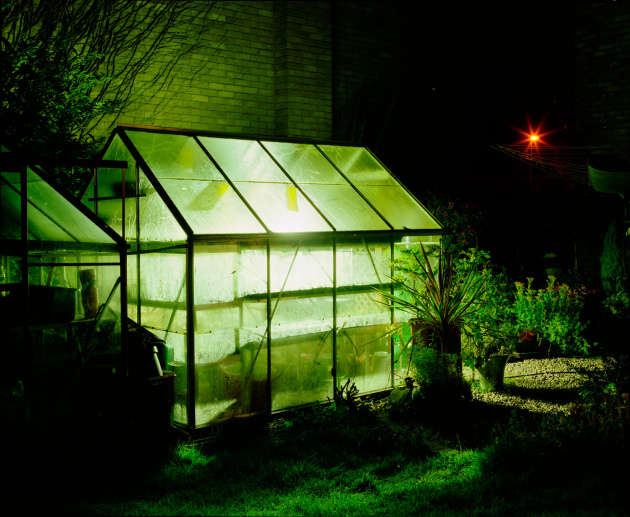
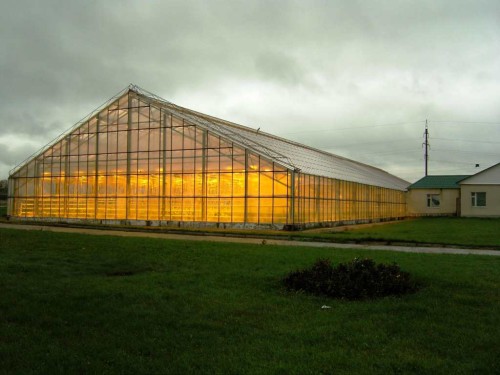
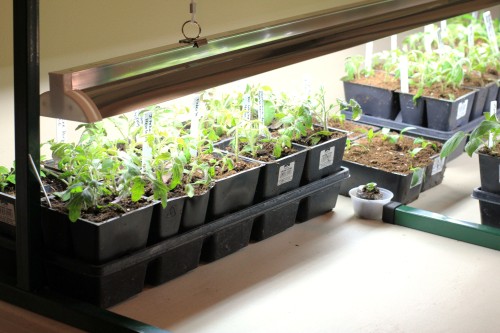
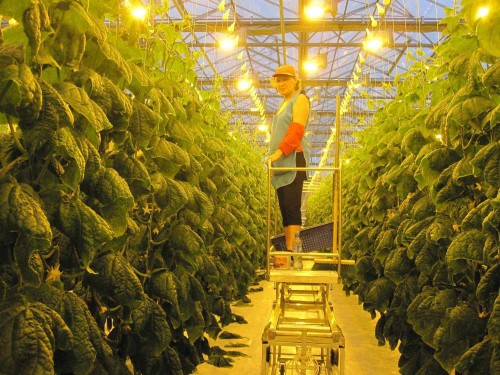
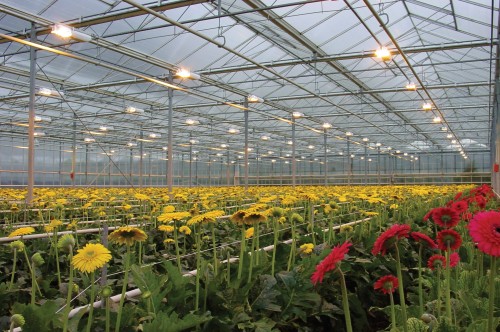
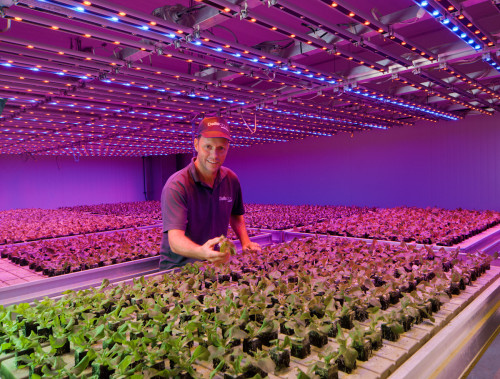
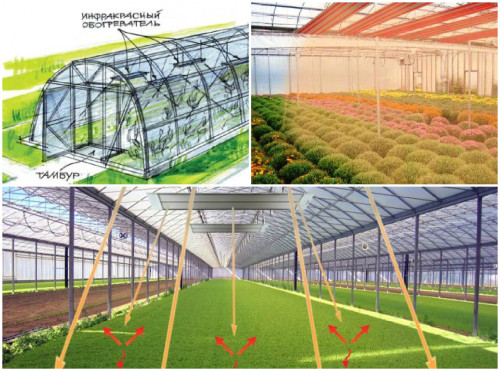












 Start a discussion ...
Start a discussion ...